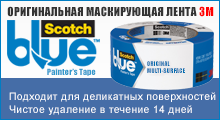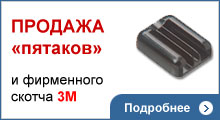2009 Infiniti EX35
Windshield, front and rear door glass, quarter glass and back glass removal and replacement instructions.
2009 Infiniti EX35.
Four-door sport utility vehicle.
NAGS® numbers: Windshield part numbers FW2904 solar; FW2905 solar, lane departure sensor; front door glass FD23707/08 R/L bonded; rear door glass FD23709/10 R/L bonded; quarter glass FQ23711/12 solar, encapsulated; and back glass FB23713 solar, heated.
A. Windshield.
Preparation.
1. Cover the front seats, floorboards, dash and steering wheel with a clean drop cloth or disposable plastic covers. Note: Always wear eye and hand protection when working with glass. Make sure you have the right glass and moldings and that the urethane systems you are about to use are current. Windshield part numbers are FW2904 and FW2905.
2. Drape the fender with a fender cover and tape up any vulnerable areas on the vehicle to protect against possible damage. Tape up the defroster vents to prevent debris from falling into the openings.
3. Remove the rearview mirror using a 20T Torx mirror tool. Slide the mirror off the pad.
4. Remove the windshield-wiper nut covers.
5. Remove the windshield-wiper nuts using a 14-millimeter wrench or socket. Move the wiper arm in an up-and-down motion to break it loose from the post, or use a wiper-puller. Caution: Wipers can sometimes be hard to remove. To avoid stressing the post, use a wiper-puller.
6. Remove the multi-piece cowl panel. To do so, first remove the two access panels that cover the battery and brake fluid.

7. Remove the 12 retainers: four under each access panel, two in the center and two in the corners.

8. Disconnect and remove the two fender bumpers at each corner of the cowl. These bumpers overlap the A-pillar moldings. Place the cowl panel in a safe place.
9. The top molding is a wraparound style. The front edge of the luggage rack overlaps the edge of the top molding. You will be able to clear the edge of the luggage rack during cutout, but it may be tricky during installation. A universal molding can be used as a replacement for the top molding.
10. The side moldings extend from the bottom of the A pillar to the top of the back glass. They are clip-type moldings that you can release with your fingers if you’re careful. One trick is to release the roof clips with your fingers first and then slide the A-pillar molding off the clips to salvage them. Note: Before beginning windshield removal, verify the new windshield is the correct one and the urethanes and primers are current. Never use outdated products as this could jeopardize the structural integrity of the vehicle and the safety of its passengers.
Removal.
11. Make sure cutting blades are sufficiently sharp.
12. Before cutting out the windshield, remove contaminants from the glass and pinchweld to prevent contact with the urethane.
13. Use the cutting tools of your choice to remove the glass from the adhesive bead. Be careful not to hit the front leading edge of the luggage rack. If you use a power tool, lubricate the cutting area with water. Spray the top and sides; then make your cuts.
14. Take the windshield out of the opening using vacuum cups. Make sure the vacuum cups do not overlap a crack in the glass. Lift the glass and place it on a windshield stand or suitable workstation.
Installation
15. After cutting the windshield out, remove contaminants such as dirt, moisture and debris from the pinchweld. Clean the dashboard.
16. Attach the new molding to the new windshield.
17. Dry fit the new glass to the opening. Mark your glass using a grease pencil or retention molding tape.
18. Place your vacuum cups on the new windshield in the appropriate location.
19. Set the windshield onto the old urethane.
20. With the windshield resting in the opening, make sure it is in the right spot.
21. Adjust both sides to the correct setting, marking the passenger side, then the driver side. Lift the glass and place it on a windshield stand or suitable workstation.
22. Follow the urethane manufacturer’s recommendations for installation.
23. Clean the inside of the windshield using a urethane manufacturer-recommended product. Do not touch the bonding area of the windshield after cleaning, prepping or priming it.
24. Wear powder-free Nitrile gloves to protect against harsh chemicals.
25. Apply the glass prep and primer following the urethane manufacturer’s recommendations.
26. Using the tool of your choice, remove the original urethane bead, leaving 1-2 millimeters of existing urethane on the pinchweld. Make sure there are no contaminants and do not touch the pinchweld after you have prepped the area.
27. Apply the pinchweld primer only to the areas where needed, and follow the urethane manufacturer’s recommendations. Allow preps and primers to dry as recommended by the urethane manufacturer.
28. Apply a triangular bead of urethane to the same path as the freshly cut urethane on the pinchweld. Before cutting your V-notch, cut the tip off of your nozzle with a nozzle-cutter. With the cut nozzle, measure to the top of the roofline, and at 1/16-inch higher than the roofline, make a mark on the nozzle with a pen or marker. Notch the nozzle up to the marked line; this will give you the appropriate triangular bead.
29. Lift the windshield from the windshield stand or workstation using vacuum cups. Set the windshield on the urethane at the mark you made during your dry fit. Lower the driver’s side of the windshield onto the urethane and line it up with the dry-fit mark; it is now in place.
30. The windshield is now ready to be decked. Press firmly to ensure a good seal.
31. Before re-installing the parts, check for leaks. Use a leak detector to go over the perimeter of the windshield. If you find a leak, apply more pressure or add more urethane to the spot and ensure that the glass makes contact with the wet urethane.
32. Re-install the removed parts in reverse order.
33. Allow the urethane to cure according to the urethane manufacturer’s recommended cure time before returning the vehicle to the customer. Warning: Disregarding the safe drive-away time that your urethane manufacturer recommends could jeopardize the structural integrity of the vehicle and the safety of its passengers.
34. You have completed the removal and replacement of the windshield.
B. Front door glass.
Removal.
1. Make sure you have the right glass. Front door glass part number is FD23707/08. The glass comes bonded with two mounting tabs at the bottom. This installation, along with other Nissan and Infiniti door glass installations, has a Super Plug design. The inner door panel can be separated from the door and serviced on a work bench, or if the glass is not broken, it can be serviced while it’s in the door.
2. Remove the screw cover from behind the door handle and remove the 10-millimeter screw.

3. Remove the screw cover from the bottom of the door pull in the armrest and remove the Phillips screw.
4. Use a door-pad tool to release the 13 panel fasteners from behind and around the perimeter of the door panel. Note, there are two near the top of the panel by the beltline of the door.
5. Disconnect the four electrical wiring harnesses: three at the window-switch cluster and one for the lower light.
6. Disconnect the door handle and door-lock linkage.
7. Remove the door panel and set it in a safe place.
8. Remove the nine, 10 mm screws from the inner door panel to expose the access hole. There are two 10 mm screws that stabilize the vertical guide bars of the regulator. You will need to remove these two screws to facilitate glass removal.

9. Lower the regulator to the lowest point to gain access to the attaching bolts.
10. Remove the two 10 mm bolts that hold the glass to the regulator. Note, the glass appears to be bonded with two tabs.

11. Remove the glass and put it on a windshield stand or suitable workstation.
Installation.
12. Insert the new glass into the opening. You may need to displace the vertical weatherstripping to ease insertion.
13. Connect the window-control wiring harness.
14. Lower the glass to line up with the tabs to the regulator. Attach the glass and hardware to the regulator.
15. Once the glass is attached to the regulator, you must reset the ‘anti-pinch’ function of the power up feature. To do so, pull and hold the window switch until the glass closes completely; continue to hold for at least four seconds. Try the power down and power up features by just touching the window switch. The glass should open and stop in the power down position and close and stop in the power up position. Then, check the auto reverse. Place a rubber mallet or stop between the glass and the upper frame of the door. Run the glass up with the power up feature. The glass should touch the obstruction and reverse. If it does not, reset and try again. If it still does not reverse, take the vehicle to the nearest dealer to reset.
16. Re-install the removed parts in reverse order.
17. You have completed the removal and replacement of the front door glass.
C. Rear door glass.
Removal.
1. Make sure you have the right glass. Rear door glass part number is FD23709/10.
2. Remove the screw cover from behind the door handle and remove the 10 mm screw.
3. Remove the screw cover from the bottom of the door pull in the armrest and remove the Phillips screw.
4. Use a door-pad tool to release the 10 panel fasteners from behind and around the perimeter of the door panel. Note, there are two near the top of the panel by the beltline of the door.
5. Disconnect the three electrical wiring harnesses: two at the window-switch cluster and one for the lower light.
6. Disconnect the door handle and door-lock linkage.
7. Remove the door panel and set it in a safe place.

8. Remove the black patch that covers the access hole for the rear attachment bolt. Remove the two 10 mm bolts that secure the glass to the regulator.

9. Remove the glass and put it on a windshield stand or suitable workstation.
Installation.
10. Insert the glass into the opening. You may need to displace the vertical weatherstripping to ease insertion.
11. Connect the window-control wiring harness.
12. Lower the glass to line up with the tabs to the regulator. Attach the glass and hardware to the regulator.
13. Check operation of the glass before replacing the panel to ensure proper installation.
14. Re-install the removed parts in reverse order.
15. You have completed the removal and replacement of the rear door glass.
D. Quarter glass.
Removal.
1. Make sure you have the right glass. Quarter glass part number is FQ23711/12. The glass is encapsulated with chrome accents.

2. Glass removal will require the removal of the interior garnish moldings and seat belt anchor bolt. Once you’ve removed the moldings, use an interior cutout tool to separate the glass part from the adhesive.
Installation.
3. After cutting the quarter glass out, remove contaminants such as dirt, moisture and other debris from the pinchweld.
4. Dry fit the new glass to the opening. Mark your glass using a grease pencil or retention molding tape.
5. Place your vacuum cups on the new quarter glass in the appropriate location.
6. Set the glass onto the old urethane.
7. With the glass resting in the opening, make sure it is in the right spot.
8. Adjust both sides to the correct setting. Lift the glass and place it on a windshield stand or suitable workstation.
9. Follow the urethane manufacturer’s recommendations for installation.
10. Clean the inside of the glass using a urethane manufacturer-recommended product. Do not touch the bonding area of the quarter glass after cleaning, prepping or priming it.
11. Wear powder-free Nitrile gloves to protect against harsh chemicals.
12. Apply the glass prep and primer following the urethane manufacturer’s recommendations.
13. Using the tool of your choice, remove as much of the original urethane bead as the urethane manufacturer recommends. Make sure there are no contaminants and do not touch the pinchweld after you have prepped the area.
14. Apply the pinchweld primer only to the areas where needed, and follow the urethane manufacturer’s recommendations. Allow preps and primers to dry as recommended by the urethane manufacturer.
15. Apply a triangular bead of urethane to the same path as the freshly cut urethane on the pinchweld. Before cutting your V-notch, cut the tip off of your nozzle with a nozzle-cutter. With the cut nozzle, measure to the top of the roofline, and at 1/16-inch higher than the roofline, make a mark on the nozzle with a pen or marker. Notch the nozzle up to the marked line; this will give you the appropriate triangular bead.
16. Lift the quarter glass from the windshield stand or workstation using vacuum cups. Set the glass on the urethane at the mark you made during your dry fit. Line it up with the dry-fit marks; it is now in place.
17. The quarter glass is now ready to be decked. Press firmly to ensure a good seal.
18. Before re-installing the parts, check for leaks. Use a leak detector to go over the perimeter of the glass. If you find a leak, apply more pressure or add more urethane to the spot and ensure that the glass makes contact with the wet urethane.
19. Re-install the removed parts in reverse order.
20. Allow the urethane to cure according to the urethane manufacturer’s recommended cure time before returning the vehicle to the customer.
21. You have completed the removal and replacement of the quarter glass.
E. Back glass.
Removal.
1. If your goal is to salvage the glass, check operation of the wiper, washer and defroster.
2. Make sure you have the right glass. Back glass part number is FB23713. It comes bonded with underside moldings.

3. Remove the top half of the interior garnish moldings.

4. You will need to release the rear hatch pistons to remove the garnish moldings. Remove the joint clip and then remove the two 10 mm bolts.
5. Disconnect the defroster connectors.
6. Remove the rear wiper cap and the 10 mm nut underneath.

7. Remove the rear wiper.
8. Use the cutting tools of your choice to remove the glass from the adhesive bead. If you use a power tool, lubricate the cutting area with water. Spray the top and sides; then make your cuts. Caution: The glass is close to the rear spoiler, so take care when cutting it out.
Installation.
9. After cutting the back glass out, remove contaminants such as dirt, moisture and other debris from the pinchweld.
10. Dry fit the new glass to the opening. Mark your glass using a grease pencil or retention molding tape.
11. Place your vacuum cups on the new back glass in the appropriate location.
12. Set the glass onto the old urethane.
13. With the glass resting in the opening, make sure it is in the right spot.
14. Adjust both sides to the correct setting. Lift the glass and place it on a windshield stand or suitable workstation.
15. Follow the urethane manufacturer’s recommendations for installation.
16. Clean the inside of the glass using a urethane manufacturer-recommended product. Do not touch the bonding area of the back glass after cleaning, prepping or priming it.
17. Wear powder-free Nitrile gloves to protect against harsh chemicals.
18. Apply the glass prep and primer following the urethane manufacturer’s recommendations.
19. Using the tool of your choice, remove as much of the original urethane bead as the urethane manufacturer recommends. Make sure there are no contaminants and do not touch the pinchweld after you have prepped the area.
20. Apply the pinchweld primer only to the areas where needed, and follow the urethane manufacturer’s recommendations. Allow preps and primers to dry as recommended by the urethane manufacturer.
21. Apply a triangular bead of urethane to the same path as the freshly cut urethane on the pinchweld. Before cutting your V-notch, cut the tip off of your nozzle with a nozzle-cutter. With the cut nozzle, measure to the top of the roofline, and at 1/16-inch higher than the roofline, make a mark on the nozzle with a pen or marker. Notch the nozzle up to the marked line; this will give you the appropriate triangular bead.
22. Lift the back glass from the windshield stand or workstation using vacuum cups. Set the glass on the urethane at the mark you made during your dry fit. Line it up with the dry-fit marks; it is now in place.
23. The back glass is now ready to be decked. Press firmly to ensure a good seal.
24. Before re-installing the parts, check for leaks. Use a leak detector to go over the perimeter of the glass. If you find a leak, apply more pressure or add more urethane to the spot and ensure that the glass makes contact with the wet urethane.
25. Re-install the removed parts in reverse order.
26. Check operation of the wiper, washer and defroster.
27. Allow the urethane to cure according to the urethane manufacturer’s recommended cure time before returning the vehicle to the customer.
28. You have completed the removal and replacement of the back glass.
By Bob Beranek.
© 2009 National Glass Association.
Посмотреть другие статьи
|




















